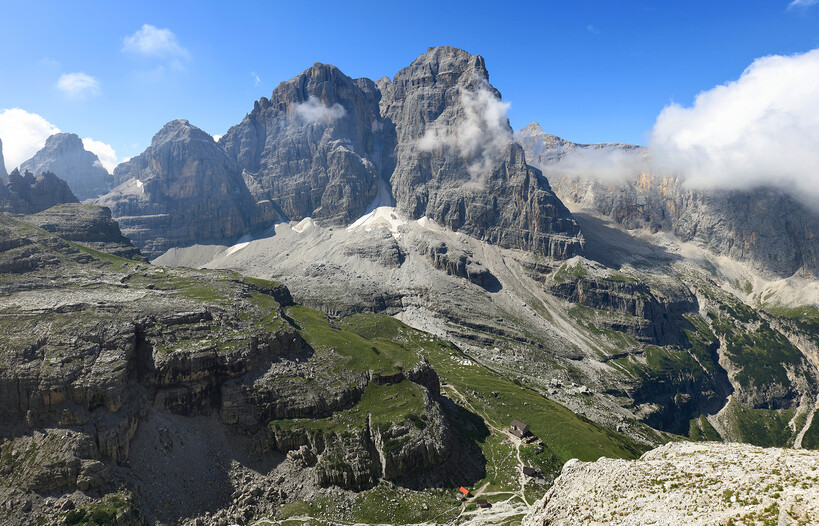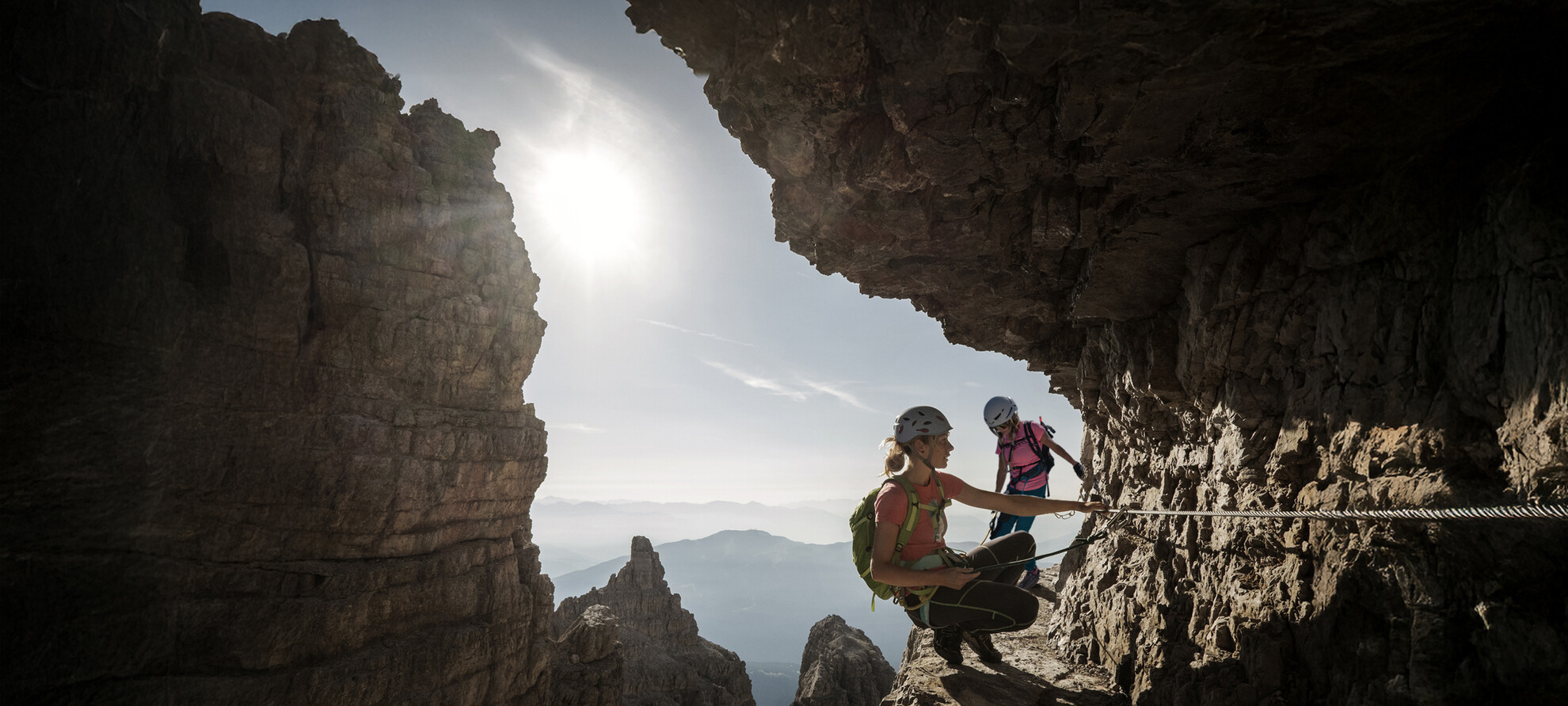Women of the Highlands
Stories of female mountaineers, mountain huts managers, and adventurers. Women's stories.
"What do you gain from breaking your back in the mountains?!?"
Who knows what Maria Piaz, sister of the Devil of the Dolomites, would have replied. To understand a little more, let's take a step back in history.
"...every lady who undertakes a trip to the Alps must wear a wide-brimmed hat, a light woollen dress that, in case of bad weather, after getting soaked and drying up, won’t be in a pitiful condition. Small loops have to be sewn into the hem of the dress, with a rope pulled through them, and the two ends tied, so that the dress can be lifted. If the dress is too long, you could trip over stones... I have heard more than one gentleman complain about the blows suffered."
These are the words that Henry Warwick Cole dedicated to the apparel for women who, in the late 18th and early 19th century, ushered in the era of so-called 'Exploratory Mountaineering'. Unfortunately, very few testimonies are left about them. Few, yet valuable to understand the context in which these first female feats took place. Through the mountains, these women gradually asserted their strength and independence. They braved the cold and fatigue to achieve a freedom they could hardly find in everyday life.
Marie Paradis, a young maid from Chamonix, in 1808 reached the summit of Mont Blanc with a group of porters and mountain guides. Henriette d'Angeville, a French noblewoman, in 1838 conquered the same peak by herself. Eugenie de Beauharnais, Napoleon's stepdaughter, climbed on mountain peaks to cure her depression.
Thus began a strong and unbreakable link between women and mountains. From the early 19th century onwards, women's mountaineering grew more and more, counting many female climbers whose names, however, rarely received the honour they deserved, and whose voices went unheard. Those were years of great unease, with a general condition of female subordination in many areas of society and of everyday life. It was perhaps also for this reason that some avant-garde women identified mountaineering as a route to emancipation.
One example among many. In 1910, mountaineer and activist Annie Smith Peck climbed a Peruvian peak, and then planted a banner with the words 'Votes for Women'!
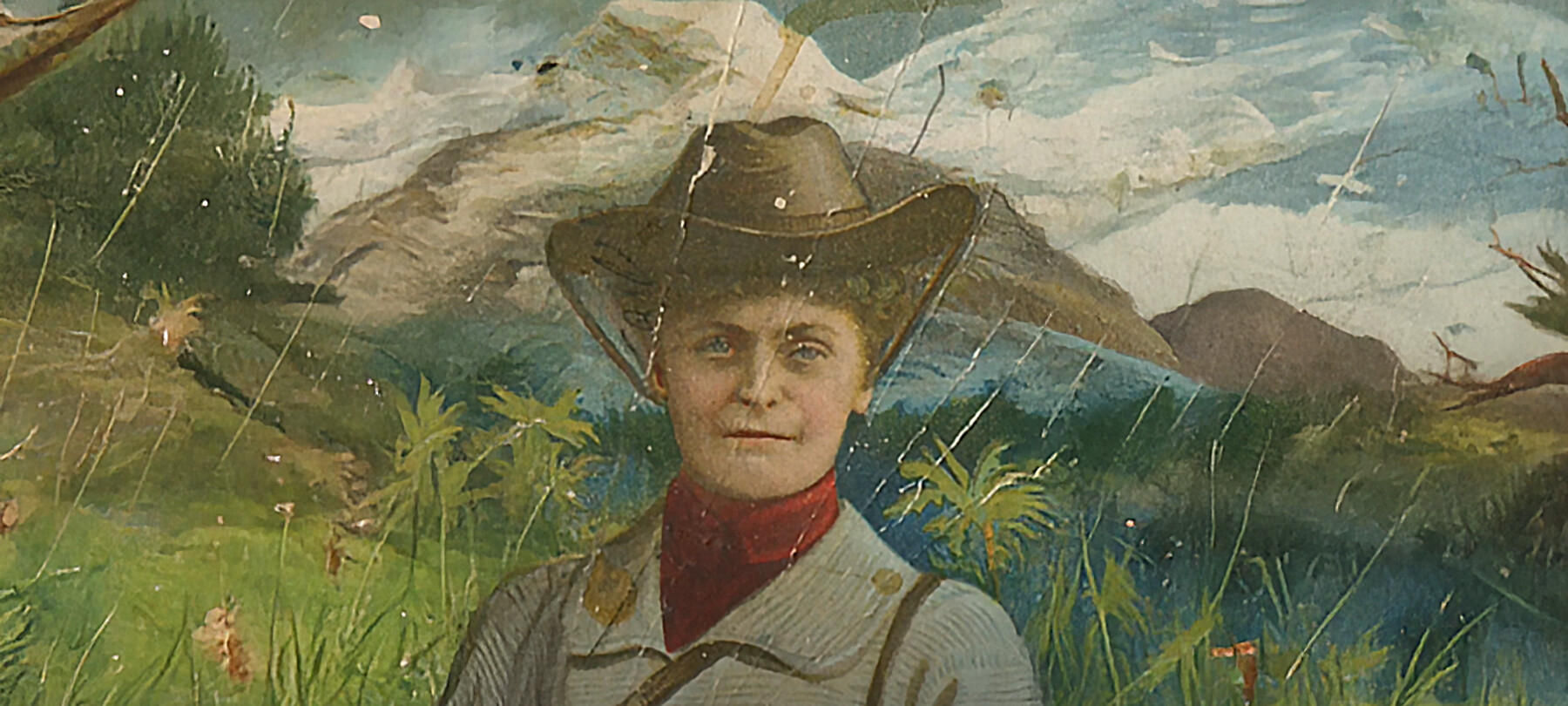
Women's mountaineering in Trentino and mountain huts
Towards the end of the 19th century, even the rocky walls of the Trentino Dolomites witnessed the first female mountaineers, both local and from foreign countries.
In that same period, the first mountain huts were built in the Trentino mountains, as a consequence of the developing mountaineering practice, and also due to the increasing popularity of mountain tourism and hiking during the Austro-Hungarian era. And many women managed these mountain huts, to offer refreshment and rest to those venturing off in the mountains.
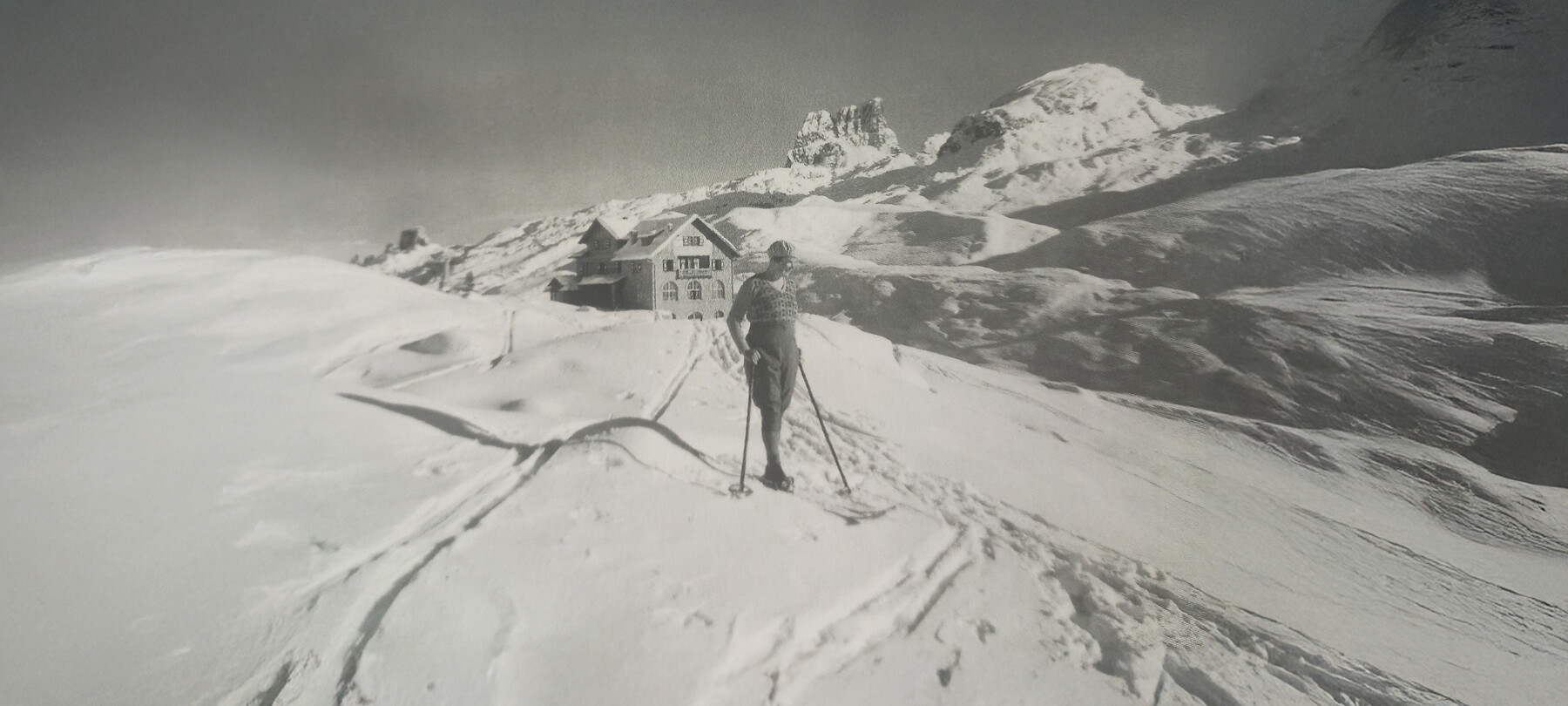
Rifugio Tosa Pedrotti and Caterina Decarli’s willpower
Caterina Decarli’s story is linked to the history of the oldest mountain hut in the Dolomites. The SAT (Società Alpinisti Tridentini) entrusted her with running Rifugio Tosa in 1910, at an extremely delicate time in history. Indeed, at the time, the mountain huts were an instrument of political battle against pan-Germanist associations. And entrusting Caterina with the management of such a disputed and coveted mountain hut was yet another chapter in the long Italian-German battle. Decarli managed the facility with so much efficiency, that SAT expressly asked her to continue managing it for several years.
Rifugio Brentei and the strength of Nella Detassis
Born in Trieste, a seaside town, in 1909, Nella Detassis was a competitive swimmer and skier. She ranked second in the 1934 downhill, second in the 1935 slalom and third in the 1936 slalom. For two consecutive years, she was also third in the Alpine Combined. She became the first Italian ski instructor and was a reserve at the 1936 Olympics, with an Italian team featuring only five athletes. She was fluent in three languages, and passionate about art and botany.
She discovered climbing with her husband, Alpine Guide Bruno Detassis, and moved with him to Madonna di Campiglio, to help him manage the Ski School, while also practising both climbing and mountaineering with perseverance.
In 1949, the couple started running the Rifugio Brentei: while Bruno was busy working as a mountain guide, Nella took care of the mountain hut.
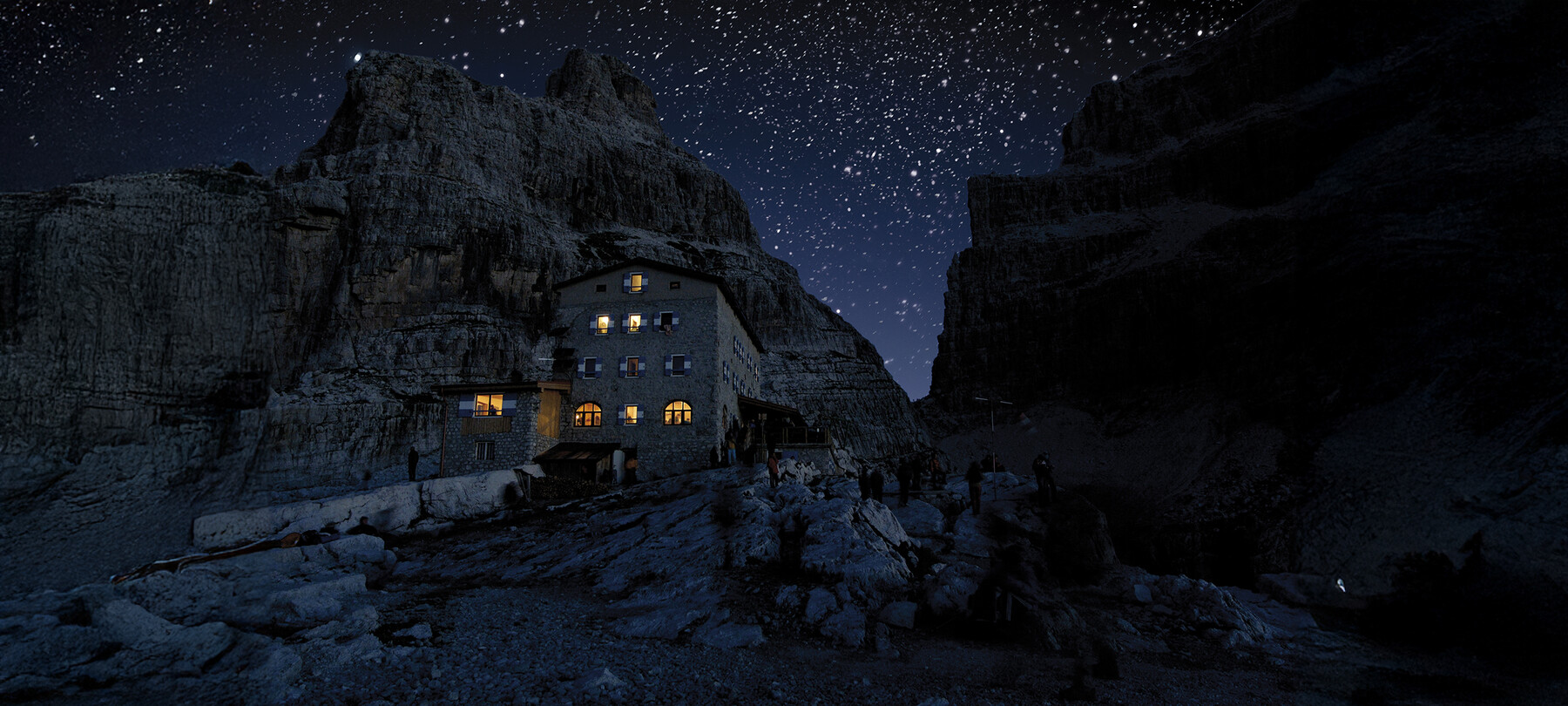
Rifugio Maria and Maria Piaz’s passion
This famous mountain hut at the top of the Dolomites terrace is named after Maria Piaz, called the 'mare del Pordoi', which means the ‘mother of Pordoi’ in the Ladin language. Sister of the great mountain guide Tita Piaz, she was born in Pera di Fassa in 1877. Determined and rebellious from an early age, when she was still a teenager, she joined a theatre company, which at the time was considered socially unsuitable for a woman. A forerunner of her times and emblem of women's emancipation, she was also the first woman in Fassa to separate from her husband. During a climb up Passo Pordoi with her father to buy a pig, Maria discovered this place and fell madly in love with it. Tireless and hard-working, she invested the little money she had in a shack to start off, and began her business as an innkeeper. From 1915 to 1918, she was interned in the Katzenau concentration camp for helping two irredentist Trentino people cross the border. Finally, in the 1960s, she was one of the most heated promoters, together with her son Francesco Dezulian, of the construction of the cable car from the Pass to Sass Pordoi. The venture succeeded and she inaugurated it herself in 1963.
And so, if we could ask her that question, well, perhaps Maria would answer with one of her most famous phrases, 'L'é dut nia', meaning 'Nothing matters'. What could she possibly have meant by it?
[Source "Pareti rosa: le alpiniste trentine di ieri e di oggi", Riccardo Decarli - Società degli alpinisti tridentini. Biblioteca della montagna, Trento]
